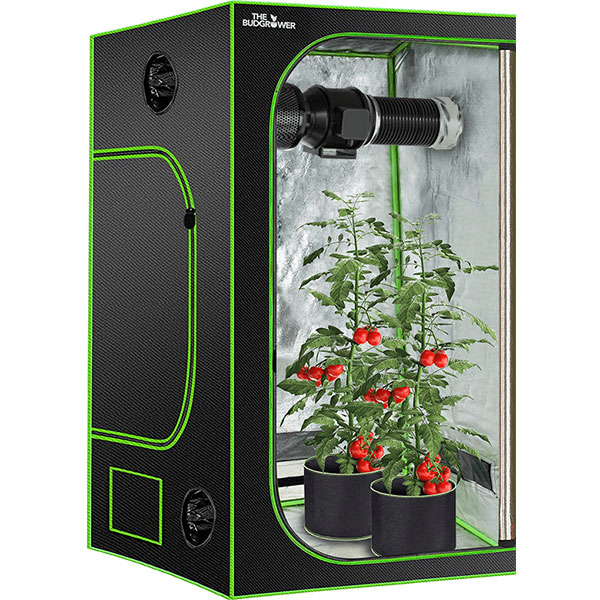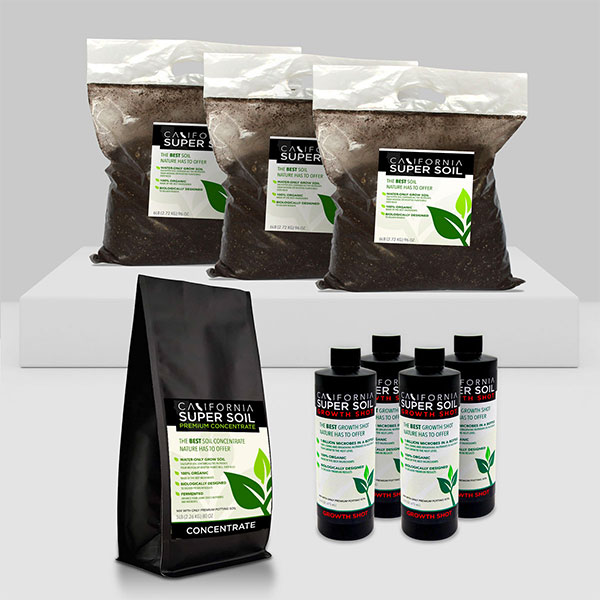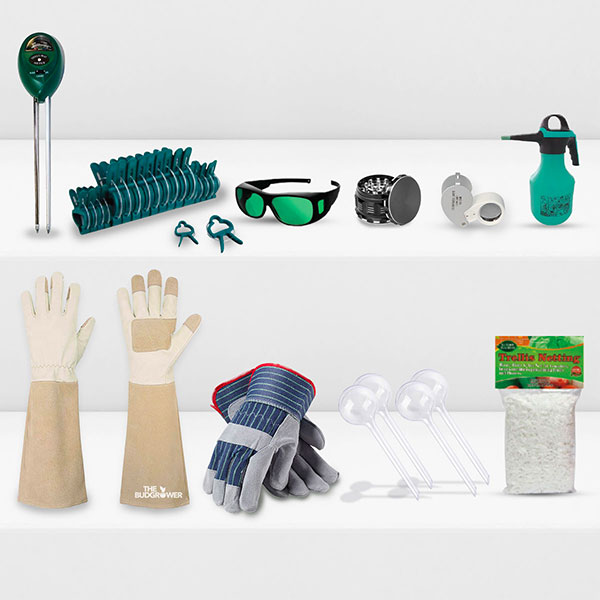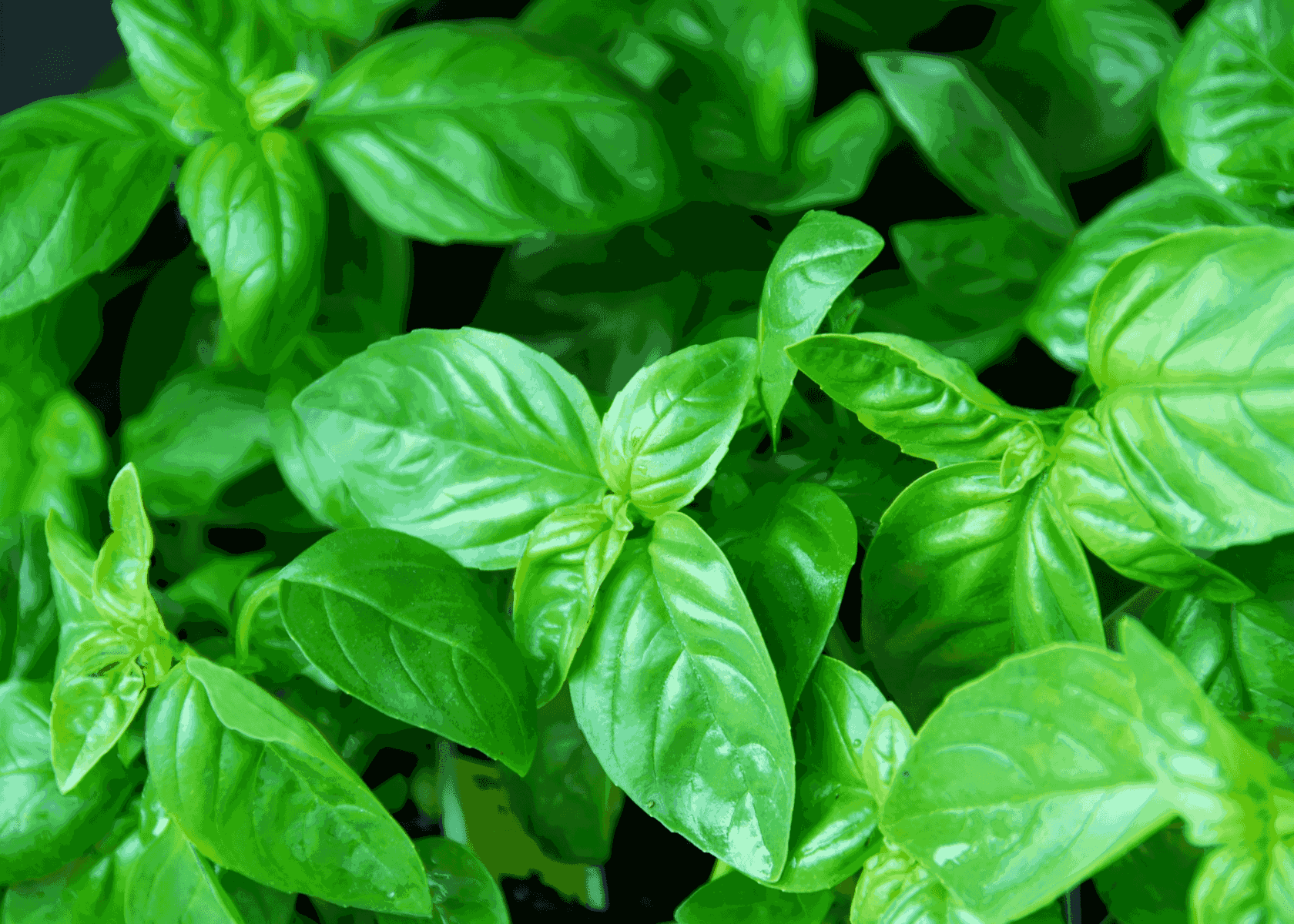Take a moment, and think about owning a homegrown garden of greens filled with fresh aroma. Growing basil is not just easy but also a pretty satisfying experience. And the best part is, it grows year-round for you to enjoy.
No wonder it’s so popular among food lovers. Plus, it adds perfect vibrancy to herb gardens, vegetable patches, and flower beds.
Let’s dive in to find out how to grow a large basil plant and enjoy the perks of this homegrown herb to the fullest!
Step-By-Step Guide For Planting Basil From Seed
While it may seem like a lot for the first-timers, growing basil doesn’t have to be too complex. Follow this simple guide and you’ll soon be growing heaps of aromatic Basil herb in your garden.
Preparing the Soil for Cultivation
If you wish to make a handsome yield out of this herb, it’s best to look after and carefully monitor a few factors. This magic green is simple to cultivate, yet it needs regular checks.
Basil grows best in summer and requires around 6-8 hours of sunlight daily. Early morning sunlight plays a vital role in its growth. Ensure the soil is moderately fertile, moist, and well-draining with a pH of 6-7. Grow it in large containers to facilitate drainage and prevent waterlogged soil.
As for the soil acidity concern, adjust it by adding compost for organic nutrients, and you’re golden.
Sowing Seeds
Let’s move on to the first practical step of our guide: sowing seeds in soil. First, choose the seeds of interest from a wide range of varieties and then a container well enough to cater to the plant.
Next, fill the garden bed with loose, well-draining, high-quality soil. Now dig up a 6-inch hole and place that basil seedling in the bed. It would be best to place seeds 3 in a cell, each half-inch deep in the soil. Continue to water the plant gently with a spray bottle or watering can. Germination occurs in no more than 7-14 days. You can see the first signs as the teardrop-shaped leaves.
Preparing the Soil for Cultivation
Once the set of this herb has popped out of the soil, the growth period starts. This part of your gardening activity requires the most time, and includes:
Pinching Off
When the plant has grown 4-6 inches, pinch them at the central top to remove the set of leaves there. This promotes branching, leading to a bushier growth.
Watering
Plus, basil plant watering plays a vital role. Large plants may need watering only once in 2-3 days, depending on how bright the sun shines daily. Also, avoid bolting in hot summer days by keeping the soil well-moistened.
Companion Planting
A little secret to the perfect yield of basil is to plant some other veggies alongside. The companion planting for basil includes tomatoes, oregano, and peppers.
Fertilizing
Use an all-purpose fertilizer every 4-6 weeks in the growing season. However, only a little of this is needed if you actively harvest the crop.
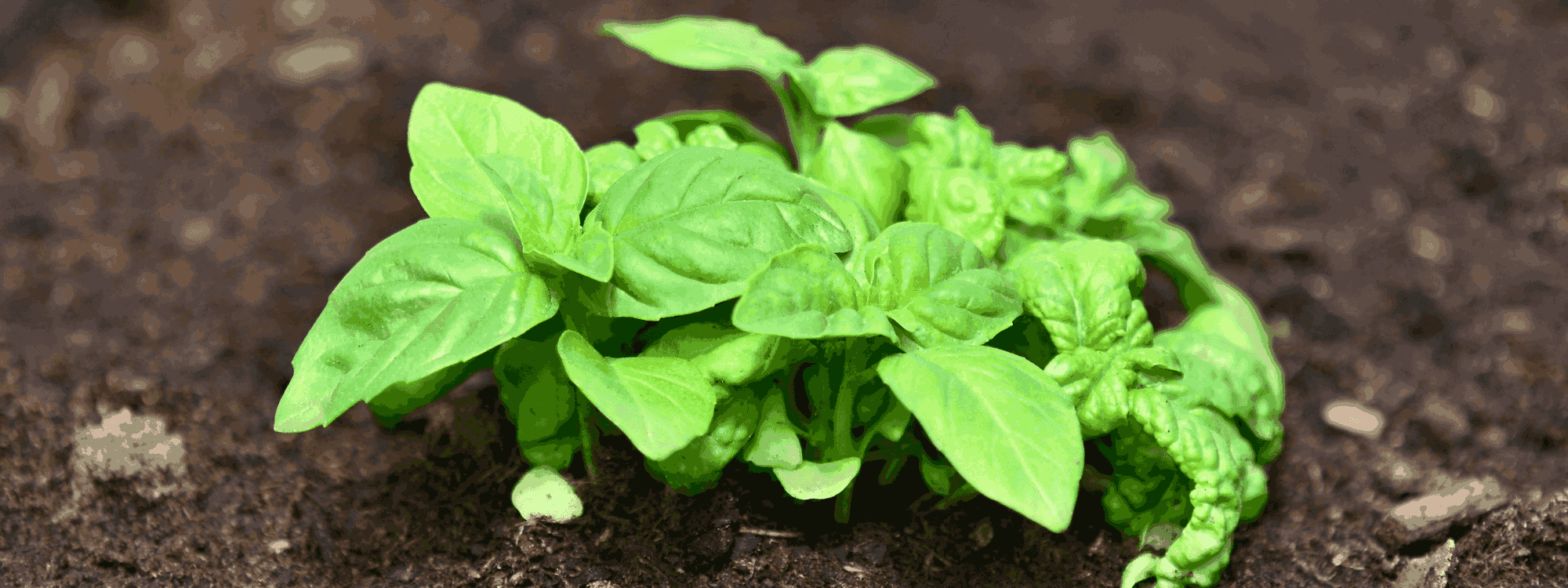
Planting Basil
Now, how do you grow basil from plants? This is your savior if you need more time but want to maintain homegrown basil for your pizzas and yummy pesto sauces.
Instead of sowing seeds and waiting for a great deal, you can directly start by getting a healthy and mature plant from a nursery and then shifting it to a container for proper growth. Dig up a hole deep enough to hold the root ball of the basil plant, cover it around, and press the soil gently to secure it.
Once the plant has stood firm in the soil, it’s time to take care of it!
Harvest Season
Don’t wait any longer when your basil grows to 6-8 inches in height. You can do this either by plucking off individual leaves or cutting stems. Even if you don’t plan on using these right away, plucking off basil timely will regulate the overall health of your plant.
Pro tip: Harvest leaves early in the morning when they’re the juiciest.
Avoiding Common Issues
After investing so much effort, you want it to be worthwhile. Here are some quick suggestions to steer away from some common issues:
- Monitor and address pest issues, such as aphids and spider mites.
- Take precautions against snugs and snails, especially with young basil seedlings.
- If planting in a greenhouse, promote ventilation to minimize the risk of fungal diseases.
Conclusion
As you grow basil effortlessly, don’t hesitate to play with different varieties. Introduce this homegrown freshness in your dishes for aroma and taste elevation.
Prioritize sunlight, well-draining soil, and water your plants timely. These simple tips will cultivate outstanding results.

